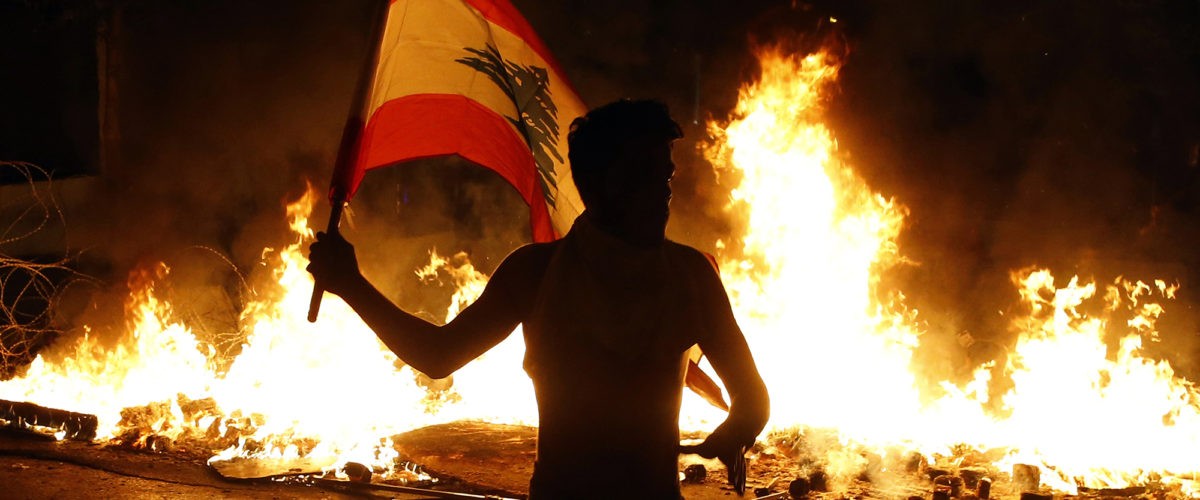If you think you’ve got it bad in this season of darkness, disease and division, take a moment to consider the agony of the people of the Middle East.
A decade ago, the new year of 2011 brought soaring hopes of freedom, progress and better lives for the region’s overwhelmingly youthful populations. The previous December, a young fruit vendor named Mohamed Bouazizi — fed up with the humiliation of paying bribes to corrupt local officials for the privilege of making a pittance to feed his family — had doused himself with paint thinner and burned himself alive in a dusty town square in Tunisia.
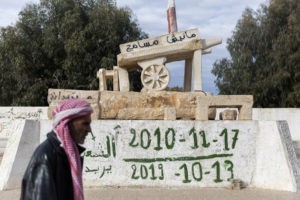
A man walks past a statue of Mohammed Bouazizi’s chariot in Sidi Bouzid, Tunisia, on Dec. 11, 2020. Hundreds of desperate Tunisians have set themselves on fire over the past 10 years in an act of protest, following the example of 26-year-old fruit seller Mohammed Bouazizi. His self-immolation in 2010 led to the downfall of Tunisia’s dictator of 23 years and unleashed the Arab Spring uprisings and a decade of crackdowns and civil wars across the region. (AP Photo/Riadh Dridi)
His despairing act opened a floodgate of frustration and anger among millions of his fellow Arabs. They took to the streets in Tunisia, Egypt, Libya, Yemen, Bahrain, Syria and other countries. They demanded freedom from tyrannical governments, freedom from pervasive corruption, freedom to live their lives without fear and oppression from the state or the mosque. Governments and dictators fell — in Tunisia, then in vastly larger Egypt, then Libya and Yemen. Regime change also seemed imminent in Syria, long ruled by the brutal Assads.
It wasn’t just restless youths, college students and unemployed poor people; shopkeepers, middle-class workers and pensioners joined in the demands for change. The more than 400 million people of the Middle East and North Africa seemed willing at last to risk everything for something better.
Assessing what changed
And what did they get for their pains?
Bullets and barrel bombs in Syria. Dictator Bashar al-Assad continues to fight a seemingly endless war of attrition, slaughtering and terrorizing civilians to defeat dwindling insurgent groups (some democratic, some Jihadi) in their midst. Five million refugees have fled to neighboring countries and to Europe.
In Egypt, the powerful Muslim Brotherhood took advantage of longtime president Hosni Mubarak’s fall in 2011 to win free elections. They proceeded to govern so ineptly that much of the public supported the bloody military coup that followed in 2013. Today, General-turned-President Abdel Fattah el-Sisi rules with a harder fist than Mubarak ever did. Thousands of democracy protesters and activists have died — or languish in prison.
Civil war in Libya ended the life and long tyranny of Moammar Gadhafi in 2011, but chaotic power sharing now reigns in the failed state. Yemen’s hopeful revolution ended when regional powers Saudi Arabia and Iran began using the poorest nation in the Middle East as a proxy for their struggle. Today, Yemenis starve as Saudi bombs continue to rain upon them; they’re suffering what the United Nations calls the worst humanitarian crisis in the world. Lebanon, overrun with Syrian refugees and strangled by decades of corrupt rule, is another nearly failed state; the most powerful force there is Iran-backed Hezbollah. Jordan’s shaky monarchy hangs on for dear life.
“Regionally, autocrats seem firmly in control once again. Only Tunisia, where the Arab Spring began, still has a functioning democracy.”
Regionally, autocrats seem firmly in control once again. Only Tunisia, where the Arab Spring began, still has a functioning democracy — and its survival is anything but assured. The rise of ISIS spread terror across multiple countries in recent years has brought untold suffering to millions before its eventual military defeat. It remains a threat, however, along with Al-Qaeda and other extremist groups.
The United States has retreated from influence in the region in the wake of George W. Bush’s failed Iraq adventure, Barack Obama’s dithering reluctance to act and Donald Trump’s refusal to confront tyrants anywhere. Russia and Iran are now the most powerful players in the area. Saudi Arabia’s de facto ruler, Crown Prince Mohammed bin Salman, claims to be a reformer but jails anyone actually seeking new liberties at home. Abroad, he eagerly blunders into any regional conflict that gives him an excuse to confront Iran (see: Yemen).
On a related note, Sunni Muslims and Shiite Muslims still despise each other, which explains much of the underlying conflict in the Middle East beyond its perennial political dysfunction. Meanwhile, Muslim persecution of Christians seems to be worse almost everywhere, with the continued existence of some ancient Christian groups now under threat from ongoing extremist attacks.
Being there
I covered the Arab Spring and its early aftermath, first from a distance and later on the ground in Egypt, Tunisia, Jordan and Lebanon. I walked the streets in Sidi Bouzid in Tunisia, where Mohamed Bouazizi set himself afire, and visited his grave outside town. I walked in Cairo’s Tahrir Square, where the revolution began there. I talked to Muslims and Christians in Cairo and Tunis, Beirut and Amman, along Syria’s borders with Jordan and Lebanon, in rundown apartments rented at high prices to Syrian refugees in Beirut and in the enormous Zaatari refugee camp in northern Jordan.
I witnessed the heroic work of Lebanese Christians delivering aid and the love of Christ — despite the objections of some of their own congregations — to Muslim refugees crossing the border from Syria. I saw the selfless ministry of Munif,* a local pastor in a Jordanian border town, who turned his church into an all-purpose aid center for exhausted, terrified Syrian refugees flooding across the line. He and his congregation helped them find food, jobs, places to live and schooling for their children. (I visited him again in 2018, and he’s still at it, bolstered by the help of numerous volunteers from around the world).
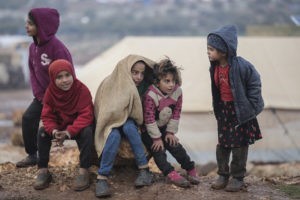
On Jan. 20, 2021, Syrian children try to keep warm during cold weather conditions at a camp for internally displaced people, near the village of Barisha. The refugee camps in the north of Idlib governorate are under threat of extreme winter weather with heavy rain and snowfall. (Photo by: Anas Alkharboutli/AP Images)
One Syrian father and mother had stumbled across the border with their five children after surviving a Syrian army ambush. They said their teenage son, Hassan,* had been shot in the head. As he lay bleeding in his mother’s arms, a soldier approached, gun pointed. Their 4-year-old son, Wafik,* who rarely spoke, stood and held up his arms. “I beg you, Uncle, don’t hurt us anymore. Have mercy on us,” he appealed. The soldier, apparently moved, took Hassan to a hospital. They later found friends at Munif’s church. When I met them, Hassan was walking haltingly. He needed ongoing physical therapy.
I wonder what happened to that family. Did they find a permanent home in Jordan? Will they ever go home to Syria?
I wonder, too, about Amani,* an intelligent and educated young woman I interviewed in 2012 in a fashionable neighborhood of Amman, Jordan. Over cappuccino with friends at a cafe, she talked hopefully about new opportunities the Arab Spring might bring her as a Muslim woman. She wanted a family, but she also wanted a real professional career and had worked hard for it.
“At the beginning it was a shock, and when it continued, it was like you’re watching a series on TV,” she said of the Arab revolutions exploding around her. “I hope this is a good step to get freedom and to have a good future, because there’s a lot of corruption in the governments everywhere in the Middle East. Nothing can change suddenly. I think it will take time. How long, I don’t know. It might take 10 years, 20 years, 50 years, but this is the first step to change the future.”
The fire next time
I think Amani was on to something. The conventional wisdom is that the Arab Spring failed utterly and won’t bloom again anytime soon. But not everyone agrees with that gloomy assessment.
“The conventional wisdom is that the Arab Spring failed utterly and won’t bloom again anytime soon. But not everyone agrees with that gloomy assessment.”
For one thing, recent protests and uprisings have shaken or toppled regimes in Iraq, Lebanon, Algeria and, perhaps most suprisingly, in Sudan, which saw the 2019 overthrow of brutal Islamist dictator Omar al-Bashir. The protesters who forced change there included Sudanese Christians.
The population of the Middle East and North Africa has grown by 70 million since the Arab Spring began and will add an estimated 120 million more by 2030. Poverty and joblessness have grown with it, as mismanaged economies fail to provide jobs for waves of young people in search of work. Modern political repression tends to work only as long as people have enough to eat.
“I don’t think we’re going to see any stability as long as dictators and military intelligence agencies continue to suffocate society,” warned Fawaz Gerges of the London School of Economics in an interview with The Washington Post. “The status quo is untenable, and the next explosion will be catastrophic.”
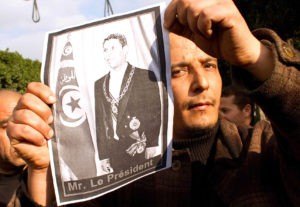
In this image from Tunis, Tunisia, from January 2011, a man holding photo of Mohamed Bouazizi (the young man who burned himself to death) as president. Several days after the fall of the Tunisian dictator, President Ben Ali, Tunisians were continuing to demonstrate against any former members of the RCD Party that would participate in the interim government.
(Photo::HALEY/Sipa via AP Images)
So don’t bet on the “Arab street” remaining quiet too long. The engines of oppression in the Middle East don’t run as efficiently as they do in China. They don’t offer the economic incentives to be quiet that China does, either.
“Despite the Arab uprising’s premature obituary and dark legacy, the revolutionary wave of 2011 was not a passing mirage,” writes political analyst Marc Lynch in Foreign Affairs. “In reality, what looked like an ending was only another turn of a relentless cycle. The regimes supposedly offering stability were, in fact, the primary causes of instability. It was their corruption, autocracy, failed governance, rejection of democracy, and abuse of human rights that drove people to revolt. … More eruptions of mass protests now seem inevitable.”
Signs of hope
That’s the political outlook. Under the surface, deeper currents flow.
I remember Shamal,* a 27-year-old Tunisian I met in Tunisia in 2012. He became a follower of Christ after seeing Christ in a vision, wearing white. Thousands of Muslim-background believers tell similar stories of their first encounter with Jesus. Shamal already had been threatened and jailed for his faith, but he hadn’t abandoned it. He had become a disciple-maker.
As we walked the streets of Sidi Bouzid, Shamal pointed to a memorial sculpture of freedom martyr Mohamed Bouazizi’s fruit cart. Adorning it were these words in Arabic graffiti: “For those who yearn to be free.”
“I didn’t know how it feels to be free, because I had never experienced it,” Shamal said of his earlier life.
Now he knows. No one can take that away.
* Names changed to protect identities
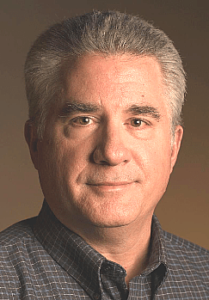
Erich Bridges
Erich Bridges, a Baptist journalist for more than 40 years, retired in 2016 as global correspondent for the Southern Baptist Convention’s International Mission Board. He lives in Richmond, Va.


